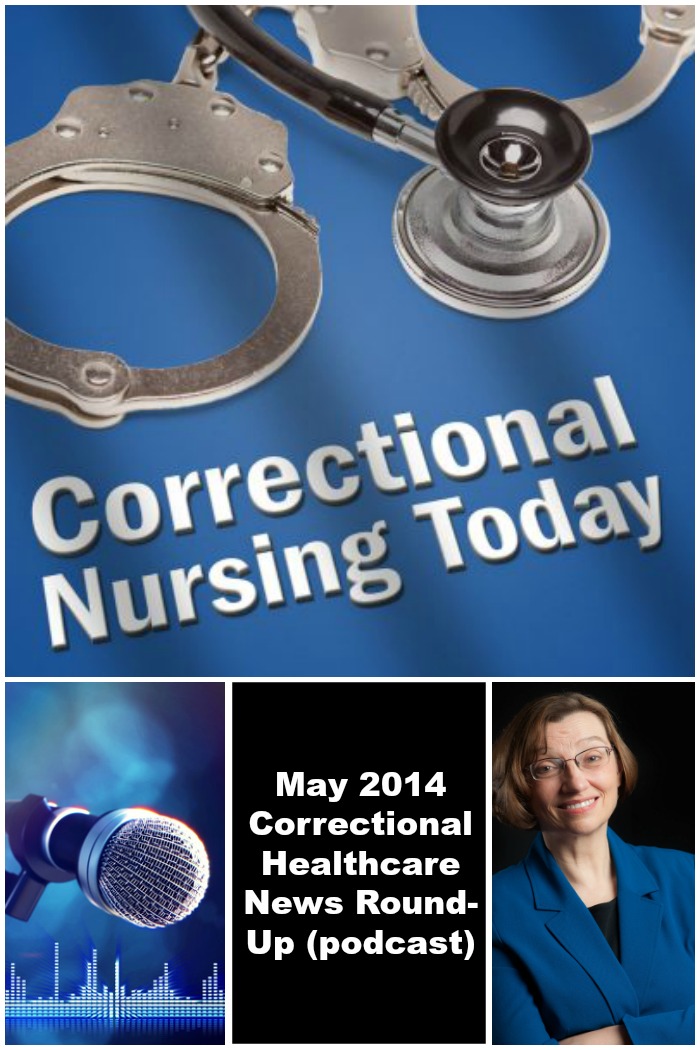 Dig into the correctional healthcare news with Lorry and guests C. J. Young, Gayle Burrow, and Johnnie Lambert. This month’s news items include female inmate growth, shackling pregnant woman, dealing with summer heat, and housing issues.
Dig into the correctional healthcare news with Lorry and guests C. J. Young, Gayle Burrow, and Johnnie Lambert. This month’s news items include female inmate growth, shackling pregnant woman, dealing with summer heat, and housing issues.
Female Inmate Growth Outpaces Males in Jails
Our first story is from the National Institutes of Corrections where they posted the lasted Bureau of Justice Statistics on the jail inmate population. They found that while the male inmate population has declined by 4.2% the female population has jumped by almost 11%. Men still make up the majority of inmates – 86%. What do you make of the rising female population? How will healthcare services be affected?
Best Practices for Using Restraints on Pregnant Women and Girls
Keeping with our female inmate theme, our next story is about a Best Practices Guide for using restraints on pregnant women and girls that was recently published by the Bureau of Justice Assistance, a part of the US Department of Justice. Many national advocacy groups have been lobbying for changes in restraint practices with pregnant – particularly laboring – women. Yet many correctional administrations have been slow to make changes. In fact, even with legislation passed to prohibit use of restraints with pregnant inmates change is slow. Recent news out of my home State of Pennsylvania is that this is still taking place despite prohibiting legislation. Why is restraint a health issue for pregnant inmates? Are there things correctional nurses can do to change practice in their setting?
Death in Hot Riker’s Island Jail Cell
Well, summer is right around the corner and that means hot conditions in many of our jails and prisons around the country. Story #3 is about the death of a mentally ill homeless veteran in a Riker’s Island, NY jail cell that was over 100 degrees. We have a lot of temperature issues in some of our older facilities – I can attest to that having worked in the NJ prison system. CJ, this story got some play on the Correctional Nursing LinkedIn group that you facilitate. Overheating is a real health issue for correctional nursing practice, isn’t it?
Companion Article: Inmate Attacks on Civilian Staff Climb at Rikers
Saskatchewan court dismisses appeal of prison inmates who want to live together
This final story is out of Saskatchewan, Canada, where the court system was asked to decide if two men in a relationship could have a request granted to live in the same house in a minimum-security annex of the Saskatchewan Penitentiary. They took the issue to court when prison officials denied the request. With the rapid social change going on around gay and lesbian concerns, do you think this type of request will become more frequent?
Companion Article: Can Gay Prison Inmates Get Married Now? Can They Share a Cell?
In the Nursing News
Systematic Review of Long Term Weight Loss Maintenance
The British Medical Journal just published finding of a systematic review of research into the effectiveness of interventions to support maintenance of weight loss. This is important in correctional practice because nutrition and exercise are common health education topics so we need some evidence as to what we should be recommending.
Forty five studies were reviewed and the meta-analysis indicated that b there is no clear winner in the successful interventions category, leaving us still wondering what is going to work to maintain weight loss. There is small but significant support for interventions such as behavioral modification sessions, weekly dietician sessions, or consistent physical activity. However, one finding was that weight loss maintenance typically peak at 6 months before a gradual regain of weight in most individuals
Iodine Supplementation for Pregnant Women
Many of us are managing pregnant patients. The American Academy of Pediatrics just published a statement regarding the need for adequate iodine for proper brain development of unborn children. They found iodine deficiency to be high among pregnant women. So, if you provide multivitamin supplementation to pregnant women in your jail or prison you will want to check that it contains iodine.
Physical Therapy May Not Be Helpful for Osteoarthritis
The latest issue of JAMA has a report out of the University of Melbourne where 102 patients with hip osteoarthritis were randomized in a placebo-controlled trial of physical therapy for reducing pain and increasing physical function. They found no appreciable difference between the two interventions. What is interesting in this study is that the placebo control intervention was going to see a physical therapist weekly without the active therapy intervention. They did this to control for other factors such as intensive contact with a caring professional, therapeutic environment, and home tasks. Since with or without the physical intervention, the patient saw improvement, it is postulated that active attention to the arthritic condition may not be as important to treatment as the regular attention of a healthcare provider. Arthritis is a top chronic condition among the incarcerated patient population so these findings are relevant for our practice. You may not be able to provide regular formal physical therapy for your arthritic patients, but paying attention to their condition and offering what you can in our limited environment can still make a difference.
Leave a Reply